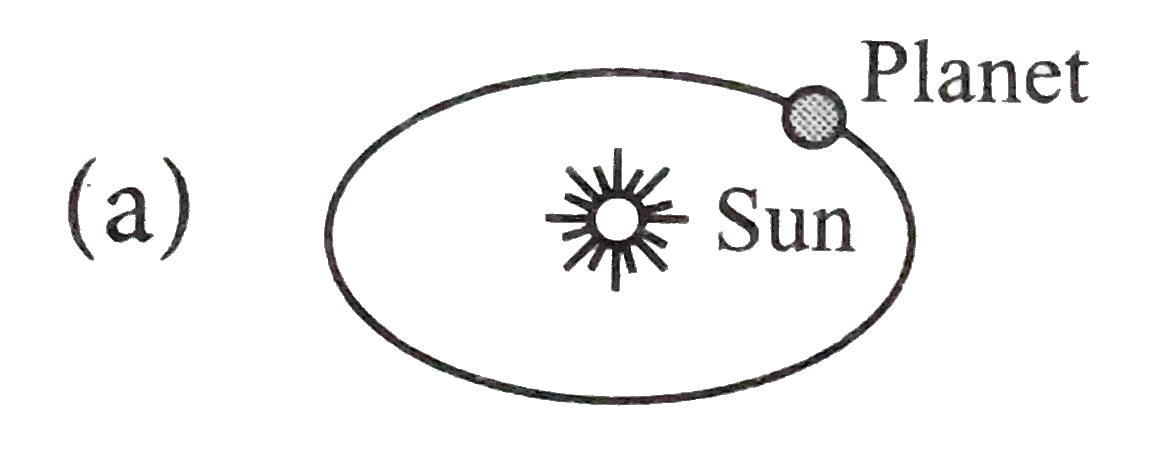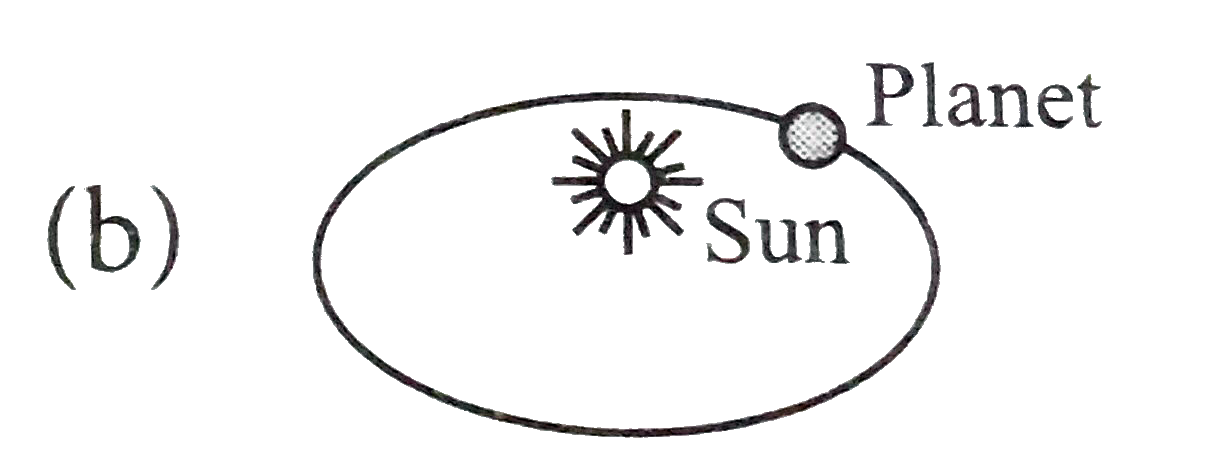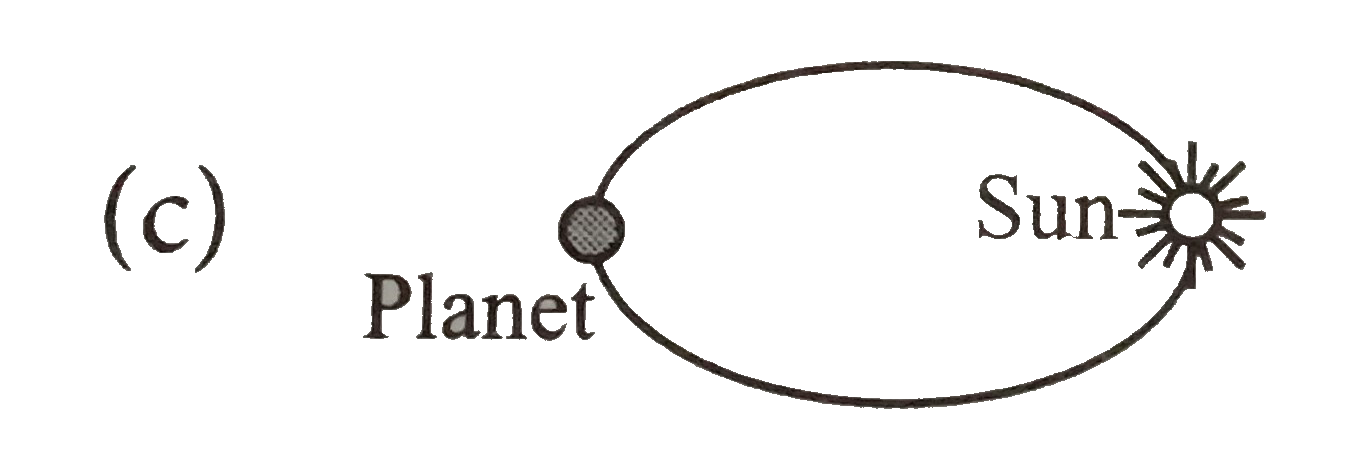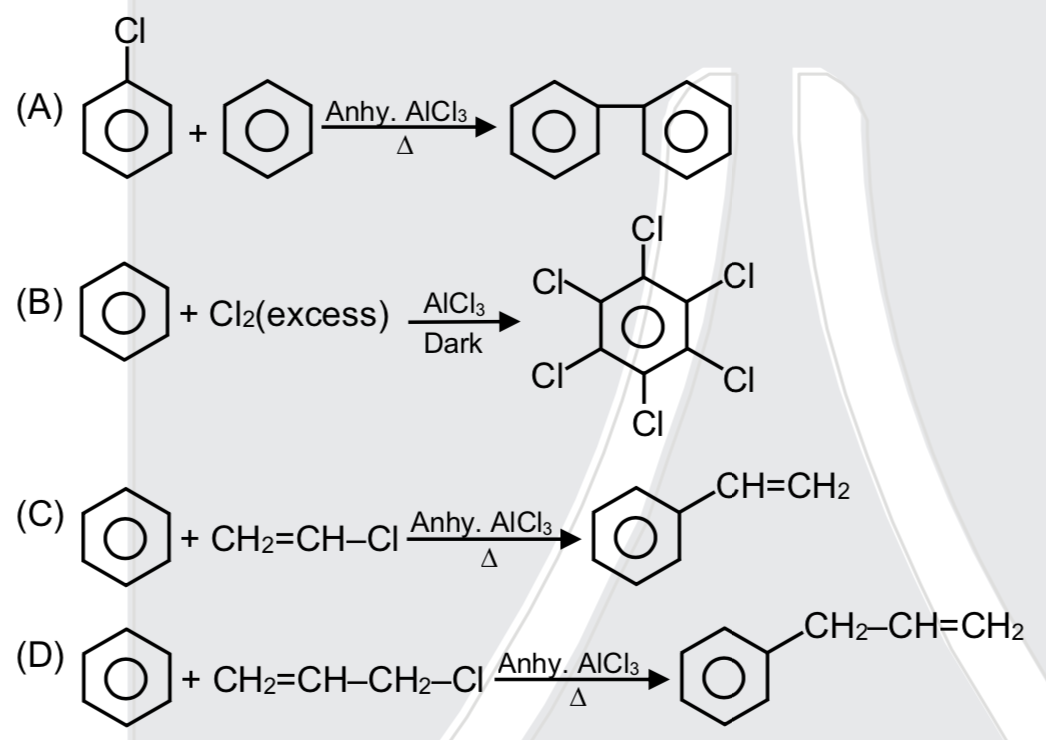Which of the following reaction is possible ?
C6H5OH+HBr→C6H5Br+H2O
(CH3)3CCl+NaOCH3→(CH3)3COCH3+NaCl


The correct Answer is:D
To determine which of the given reactions is possible, we will analyze each option step by step.
1. Option A: Phenol reacting with HBr
- Phenol (C6H5OH) is an alcohol that can react with HBr. However, the reaction involves the formation of a phenoxide ion (C6H5O⁻) when the hydrogen from the hydroxyl group is removed.
- The phenoxide ion is stabilized by resonance, making it less likely for HBr to attack and replace the hydroxyl group with a bromine atom.
- Therefore, this reaction does not take place.
2. Option B: Tertiary carbon with Cl reacting with NaOCH3
- In this case, we have a tertiary carbon attached to a chlorine atom (R3C-Cl) reacting with sodium methoxide (NaOCH3).
- The negative charge on the methoxide ion (OCH3⁻) would attempt to attack the tertiary carbon, leading to the formation of a carbocation.
- However, the stability of the tertiary carbocation does not favor the formation of the desired product, making this reaction not feasible.
3. Option C: Alkene with OMe and Cl groups
- Here, we have an alkene with a methoxy group (OMe) and a chlorine atom.
- The reaction does not involve a clear mechanism for the addition of Cl to the double bond, and thus, this reaction is also not feasible.
4. Option D: Grignard reagent with a three-membered ring containing O
- In this reaction, a Grignard reagent (C6H5MgBr) is added to a three-membered ring containing oxygen.
- The Grignard reagent is nucleophilic and will attack the electrophilic carbon in the ring, leading to the opening of the ring.
- After the ring opens, adding water will protonate the oxygen, resulting in the formation of an alcohol.
- This reaction is feasible and leads to the formation of the desired product.
Conclusion:
- The only possible reaction among the options provided is Option D.
- Phenol (C6H5OH) is an alcohol that can react with HBr. However, the reaction involves the formation of a phenoxide ion (C6H5O⁻) when the hydrogen from the hydroxyl group is removed.
- The phenoxide ion is stabilized by resonance, making it less likely for HBr to attack and replace the hydroxyl group with a bromine atom.
- Therefore, this reaction does not take place.
- In this case, we have a tertiary carbon attached to a chlorine atom (R3C-Cl) reacting with sodium methoxide (NaOCH3).
- The negative charge on the methoxide ion (OCH3⁻) would attempt to attack the tertiary carbon, leading to the formation of a carbocation.
- However, the stability of the tertiary carbocation does not favor the formation of the desired product, making this reaction not feasible.
- Here, we have an alkene with a methoxy group (OMe) and a chlorine atom.
- The reaction does not involve a clear mechanism for the addition of Cl to the double bond, and thus, this reaction is also not feasible.
- In this reaction, a Grignard reagent (C6H5MgBr) is added to a three-membered ring containing oxygen.
- The Grignard reagent is nucleophilic and will attack the electrophilic carbon in the ring, leading to the opening of the ring.
- After the ring opens, adding water will protonate the oxygen, resulting in the formation of an alcohol.
- This reaction is feasible and leads to the formation of the desired product.
- The only possible reaction among the options provided is Option D.
Similar Questions
Which of the following reaction are possible ?
(1) ArN+2+CuBr→Ar−Br
(2)
(3) ArN+2+H3PO2H2O−−→ArH
(4) ArN+2+I−→ArI
Select the answer using codes given below:
View SolutionWhich of the following reaction are possible ?
(1) ArN+2+CuBr→Ar−Br
(2)
(3) ArN+2+H3PO2H2O−−→ArH
(4) ArN+2+I−→ArI
Select the answer using codes given below:
View Solution
Knowledge Check
Which of the following orbits is a possible orbit for a planet?
A B
B C
C D
D
Which of the following reactions are possible ?

View SolutionWhich of the following reactions are possible ?

View SolutionWhich of the following compound is possible :
View SolutionWhich of the following change is possible in aqueous medium -
View SolutionWhich of the following reactions is / are possible at the anode ?
View SolutionWhich of the following arrangement is possible ?
View SolutionWhich of the following effects are possible in ortho nitrophenol
View Solution